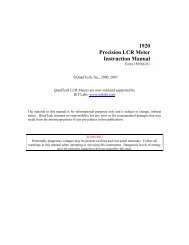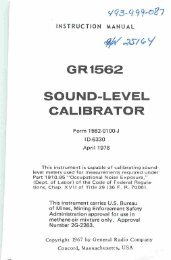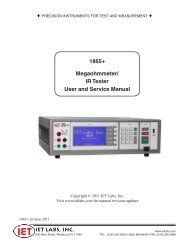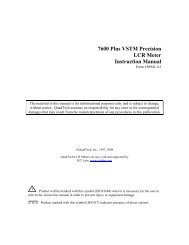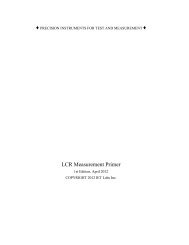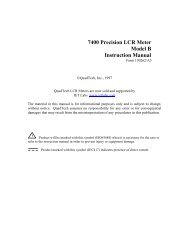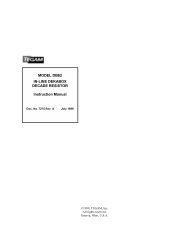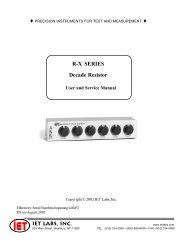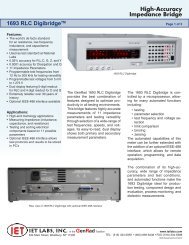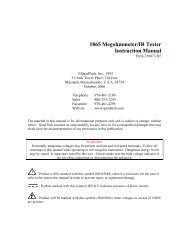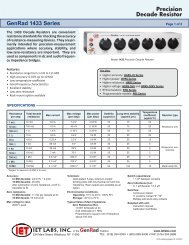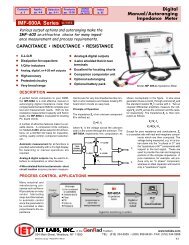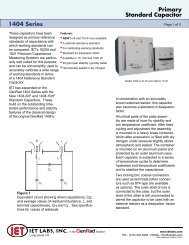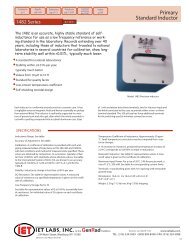Handbook of High Speed Photography - IET Labs, Inc.
Handbook of High Speed Photography - IET Labs, Inc.
Handbook of High Speed Photography - IET Labs, Inc.
Create successful ePaper yourself
Turn your PDF publications into a flip-book with our unique Google optimized e-Paper software.
2.3 FLASH INTENSITY VERSUS DURATION.<br />
The photographer may have to compromise when choosing an in<br />
strument for very high-speed applications since, as a glance at Table<br />
2-2 will prove, the greater the intensity <strong>of</strong> an instrument's flash, the<br />
longer the duration and, the lower the flash frequency rate. For exam<br />
ple, the EG&G Model 549 Micr<strong>of</strong>lash has a high-intensity submicrosecond<br />
flash, and this is at the expense <strong>of</strong> repetition frequency. About<br />
fifty times faster, but with one fifth the intensity and six times the du<br />
ration, are the flashes <strong>of</strong> the General Radio Type 1531 and Type 1538<br />
Strobotac electronic stroboscopes. A number <strong>of</strong> these instruments<br />
may be flashed in succession if a burst <strong>of</strong> high-intensity flashes with<br />
high repetition frequency is required. (Refer to paragraph 5.3.3). Fig<br />
ure 2-1 is a picture taken with such an arrangement. If light intensity,<br />
not speed, is the main concern, the General Radio Strobolume is prob<br />
ably the best choice.<br />
Figure 2-1. Unretouched photo <strong>of</strong> bullet breaking string shows how little<br />
even this fast-moving projectile travels during strobe flash. (Photo is<br />
multiple exposure, each image <strong>of</strong> the bullet corresponding to a different<br />
Strobotac flash, with a delay <strong>of</strong> approximately 50/-isec between each<br />
flash). See Figure 5-13.<br />
12



